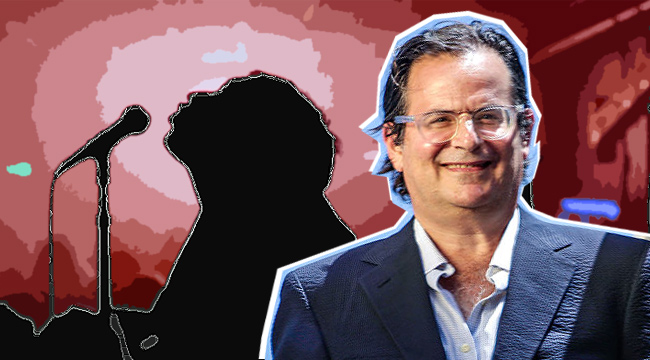
Music often plays an important role in a TV show, but when you’ve got Martin Scorsese producing a show about the record industry in 1973, music’s going to play an even bigger part. HBO’s new series, Vinyl (available to stream on HBO Now), stars Bobby Cannavale as record mogul Richie Finestra (Bobby Cannavale) amidst the glory days of rock and roll’s excess as he’s trying to reinvent both himself and his label, all set to a visceral rock and roll soundtrack. The man behind the construction of that soundtrack is Randall Poster, a music supervisor who frequently collaborates with both Scorsese and Wes Anderson, respectively, and the person behind the musical profile of films like I’m Not There and Away We Go. We recently got a chance to speak with Poster on how he created a sonic landscape that captures the sound of the ’70s for Vinyl and teaming with Scorsese.
I’m sure you get asked this a lot, but would you mind starting off with a run-down of what the day-to-day of your job is like as a Music Supervisor?
Generally, I describe it as the Music Supervisor is the person who helps the filmmakers imagine, and then execute, a musical strategy for a movie or a show. With a project like Vinyl, because there’s such an inordinate amount of on-camera music, a lot of work has to be done in pre-production as you prepare to shoot these musical episodes. So, the undertaking involves getting everyone to settle on repertoire, recording the music, working with casting to find musicians and actors to portray the bands on camera, rehearsing them, and then getting ready for it to be shot.
Otherwise, the job is to work with the directors and the editors to find the music that will work as source music in the show. So the music that’s playing in the record company, on the radio, all that stuff.
So, regarding a show like Vinyl, where music is the main plot point, how much does your involvement change?
First, there’s a creative commitment to [Vinyl] having music playing almost everywhere, and really, with a show like this, you’re using music to set the story in time and using the music to help define the different environments within the story. You’re reaching into a variety of genres to make those distinctions, but also play to this moment in time.
Do you find yourself appreciating the limitation of a project like this, where all the music has to come from 1973 or sooner?
You hit on a good point, because [in the show] it’s 1973, but you’re basically allowed to be open to the music that preceded it. Certainly in our stories, we’re sort of celebrating some of the icons of music that were the building blocks of the contemporary sound in 1973.
On that note, the show has had actors a number of actors coming in playing everyone from Robert Goulet to Robert Plant, how do you choose the songs for these icons as characters on the show?
In some of those scenarios, they were born out of the writers’ room, but there’d be certain scenes we knew we wanted to have some kind of historic musical character. Then we’d debate whether it was a song that we wanted to build on or a character we’d want to build on.
Were there any songs that you really wanted to use that you weren’t able to for any reason?
We pretty much were able to get whatever we wanted, and I think there was only one scenario where we were going to depict a specific character, and we were all set-up to do it, but the actor we were working with just really couldn’t deliver it. So, we had to change the idea.
Can you talk a little about those in-show fantasy music videos that intermittently popped up throughout the season?
We jumped in on that stuff, me and Megan Courier, who supervises the music with me, she became a casting monster. We were very involved in the casting of musicians that didn’t have to say any lines, so we could reliably count on singers and musicians to become these visions of rock and roll past.
There’s not really a lot out there to compare it to. What set this idea in motion?
That was a really Scorsese inspiration when we made the pilot. You basically didn’t have to abide by absolute logic, and I think those moments were very stylized and were an opportunity to really step out of the basic dramatic frame-work. They were really fun to do. You know, we did that Otis Redding one in the pilot, where Marty was intent on getting the lighting a certain way so that we were referencing the lighting from Otis Redding’s performance at Monterey Pop. It was almost like: here it is, here is Otis Redding singing “Mr. Pitiful” kind of at the Monterey Pop Festival, so we got to reinvent history a little bit.
They also seemed like they had different levels of immersion with the show’s characters. Some were isolated scenes, and other times you’d have Buddy Holly outside Richie Finestra’s car.
I think those scenes were inherently flexible. That scene in episode six with Buddy Holly, which is probably my favorite episode, I think that was really where his song is driving the whole episode, then all of the sudden at the end, there’s Buddy Holly. Really, his song was a building block to the appearance of Buddy Holly.
Scorsese’s obviously a big music guy. Does he come to the table with a handful of songs already picked out?
This is the fifth or sixth project I’ve done with him, and I think he trusts that we do a really thorough exploration of any inspiration he throws our way. It’s interesting because in this time period, everyone sort of has their sacred songs and sacred bands, and Marty and I in a lot of our dialogue were trying to make connections with the rock and roll legacy and really making sure that we paid tribute to the lesser known…
Cult?
Well, not the cult songs. I’m trying to think of a way to frame this — We had a bunch of songs born from Ike Turner, so I’d say paying respect to the sparks of rock and roll. The first song that Lester Grimes [Ato Essandoh] does is called “The World Is Yours,” which is an Ike Turner song. Then, in the pilot, there’s a bit where Richie gets caught on the Cross-Bronx Expressway and goes off where he’s going to see Lester again and we have Humble Pie doing “Black Coffee,” which is an Ike Turner song. So, it’s these things that Marty was intent on. It always gets him excited when there’s a hidden logic behind certain choices.
How would your role factor into some of the show’s original music, like with The Nasty Bits?
The arc of that story came into focus as we were making the show. We didn’t have the scripts to all the episodes when we started, and I think that as it became clearer, like with the “Heroes” song at the end, as it first appeared, it was a blues song that they transform. One of the most fun things we get to do in terms of getting this new material was that we worked with a songwriter named Nathan Larson, and he wrote it originally as a rock song, and we then transformed it back into a blues thing. That’s just the most fun to do — the original songs we did with Hannibal, the original songs we did with that band Indigo, then some of The Nasty Bits stuff, those were things we had to create a sound that sort of referenced the musical past, but still had to have some sort of identity.
Did the story end up changing at all based on how the music was used in the show?
Well, everybody involved in the show really loved Hannibal (Daniel J. Watts), so we had that little intro piece of “Hannibal, I Want You Back,” so you see the writers put it in where Hannibal’s name comes up in an A&R meeting, and half the actors go, in their roles, “Hannibal, we want you back!” So you see — after having made the music and making it real — it carry through to the story in a way you couldn’t have anticipated. Or the fact that people loved the way “Kill the Lights” turned out, so then the writers tried to use it as much as they could.
This is a factor in a lot of Scorsese’s projects, but there’s a lot of seemingly specific song fragments used in various scenes. Do you go through and earmark each song piece-by-piece like that?
Yeah, I think so! Sometimes that stuff goes down in an editing room with the editor, and you’re just saying, “Let’s go to this spot in the song,” or, “Let’s try and cut it this way,” or, “Let’s cut into the chorus after the first verse instead of waiting for the second verse.” That’s the beauty of working in a plastic medium. You can repurpose it in a way that you feel it will have the most impact.
How did Sturgill Simpson’s theme song, “Sugar Daddy” come about?
It’s funny, we put the call out for songs for the intro, and we had a lot of songs submitted. I’m a big Sturgill Simpson fan, but if you’d told me that Sturgill Simpson would’ve been on the main title of Vinyl, I wouldn’t have bet on that. And really, it just had that raw quality that everybody was looking for to match the imagery. They sort of had an idea of what they wanted the title sequence to look like, and we had mock-ups of it, and we were intent on not having a song that had its own narrative, you know? It felt like it wanted it to be a little bit abstract, and I think Sturgill just captured that raw rock energy that we were looking for.
I see what you’re saying about not betting on it, but I probably had the same initial reaction when I heard that The Brian Jonestown Massacre would be doing the theme for a prohibition-era crime drama.
Yeah, I’m with you there.
Was it a conscious decision to leave the theme song off of the pilot episode?
Yep, that’s the way Marty wanted to do it.
Anything you’re able to mention for the second season?
Not really, this is probably the last interview I’ll be doing about season one, and now I just kind of feel like taking a nap. There’s been just so much music, and living in 1973, I kind of want to visit the contemporary world for a little bit. But, I think we’re hoping to shoot it later this year, and in terms of where we find ourselves is that they’re trying to figure it all out. But I promise it’ll be very musical, and a lot of fun.






